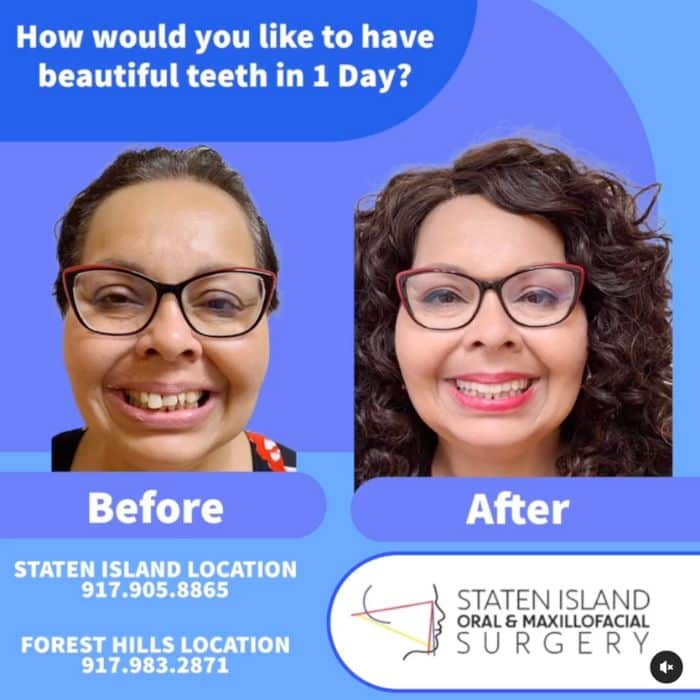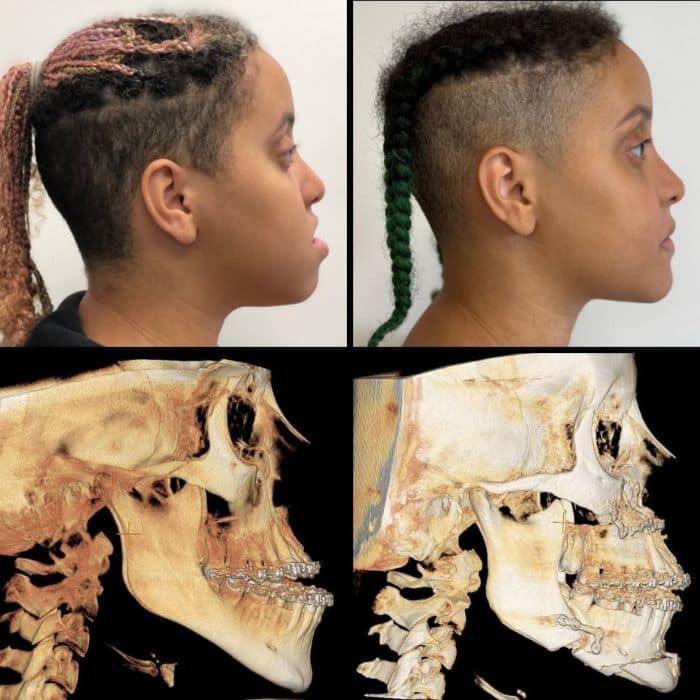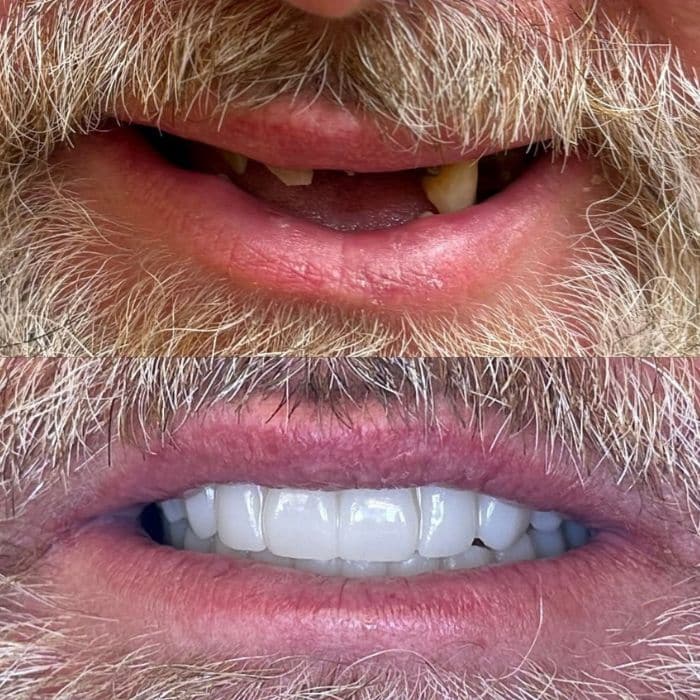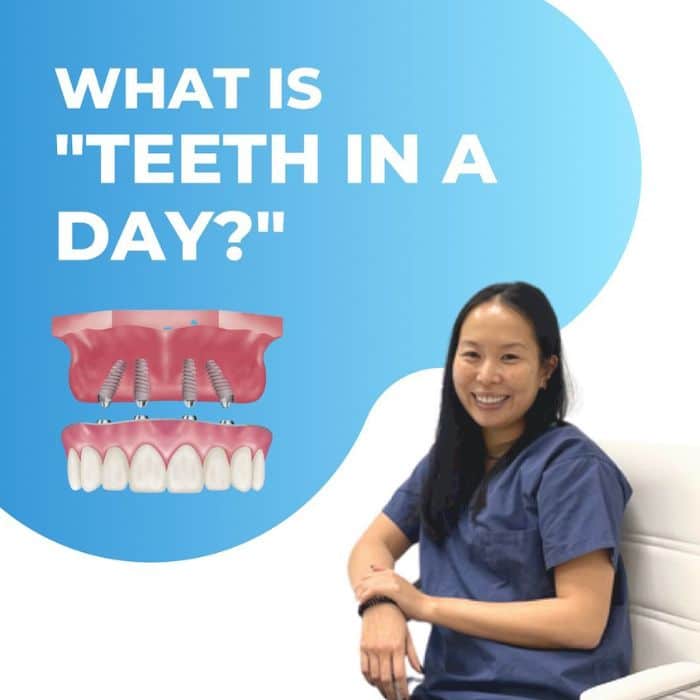Dental Implants in Staten Island, NY
Staten Island Dental Implant Surgeons
If you’re looking for high-quality dental implants in Staten Island, you’ve come to the right place. Missing permanent teeth can be embarrassing, bad for oral health, and get in the way of your daily activities. At Staten Island Oral & Maxillofacial Surgery, we offer dental implants as a stable, natural-looking way to replace missing teeth and restore function. Dental implant surgery can be your doorway to self-confidence and peace of mind.
What Are Dental Implants?
Dental implants are small titanium posts that are surgically placed into the jawbone where teeth are missing, acting as artificial tooth roots. Over a number of months, the jawbone is able to fuse with the dental implant through a process called osseointegration to create a strong foundation for artificial teeth.
A dental implant can replace one tooth or multiple teeth to create a full, permanent and healthy smile that looks and feels natural. These replacement teeth look, feel, and function just like natural teeth.
In cases where all the teeth in the upper and / or lower jaw need to be removed it is possible to remove the teeth, place the implants and attach the new fixed teeth within 24 hours.
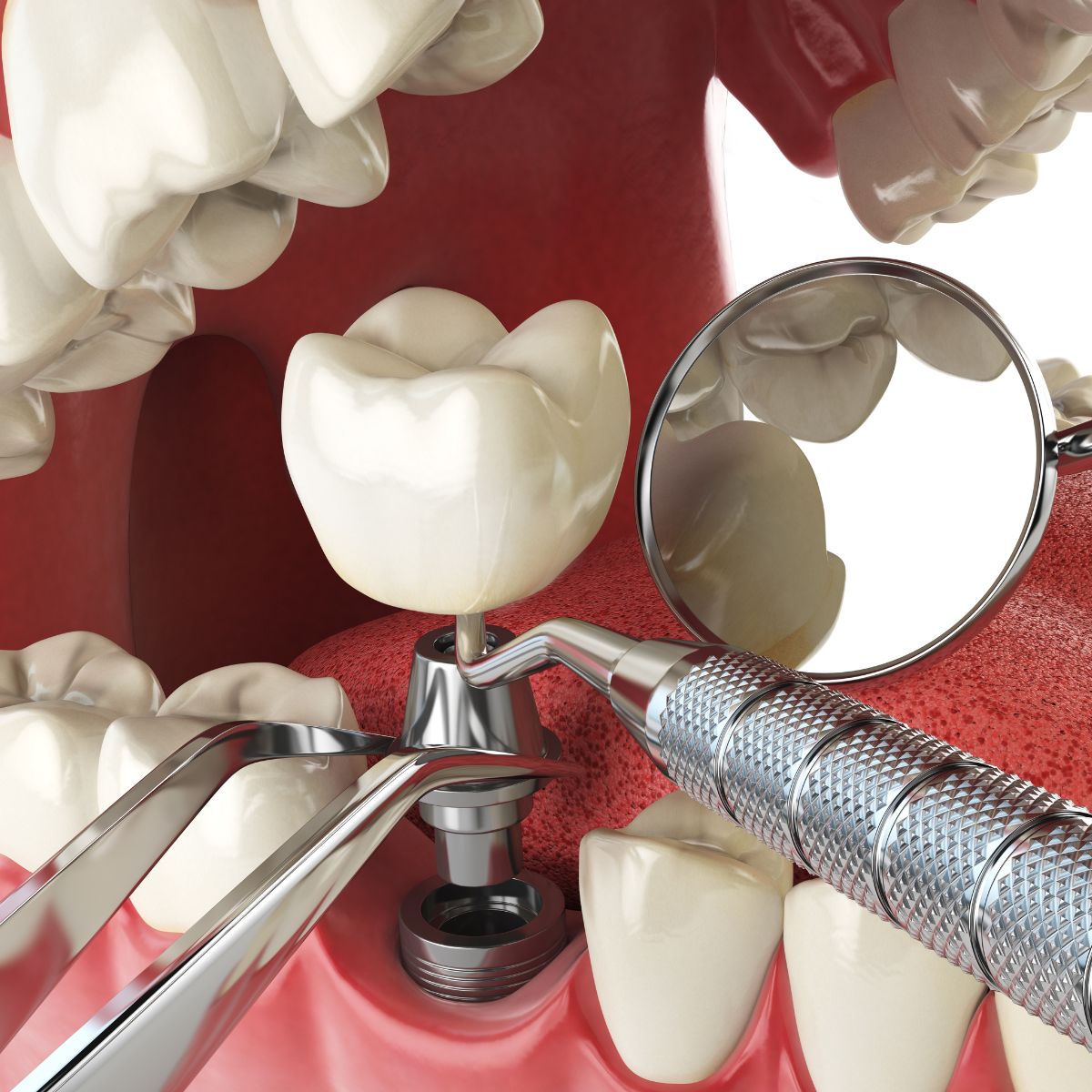
Parts of a Dental Implant
The implant fixture
The implant fixture resembles a small screw and it is surgically placed into jawbone to serve as an artificial tooth root. It is typically made of a biocompatible material like titanium. It is this implant fixture that permanently attaches to your jaw through a process called osseointegration.
The abutment
A permanent, but removable by your doctor, connector that attaches to the implant and secures a tooth or set of teeth.
The crown (or prosthetic tooth/teeth)
This is the visible part of the dental implant that resembles a natural tooth or teeth. This can be a single crown, a bridge, an overdenture, or a permanent set of full teeth. These teeth are attached to the abutment, completing the dental implant and restoring the functionality and aesthetics of the missing teeth.
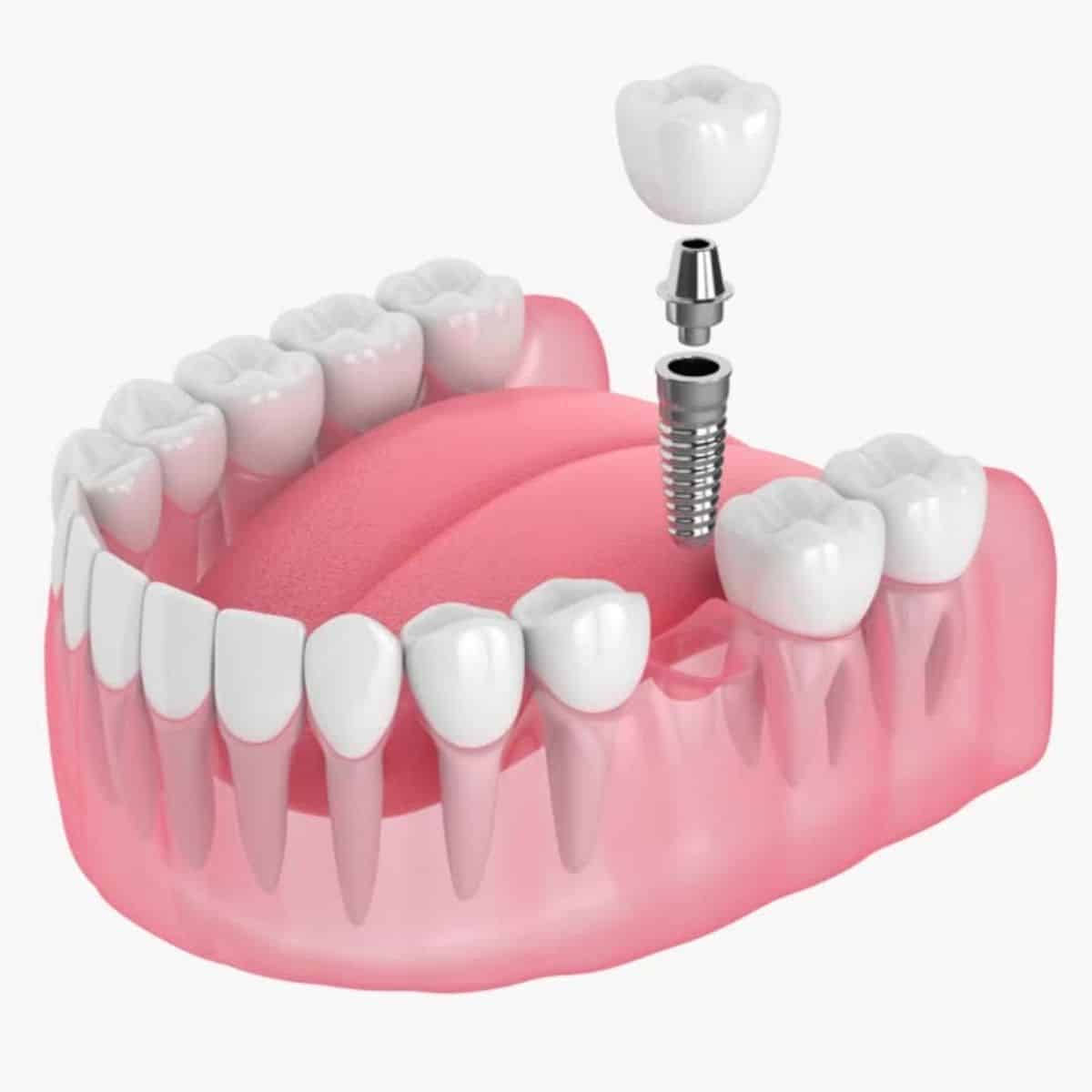
The implant fixture
The abutment
The crown (or prosthetic tooth/teeth)
THE PROCESS
How Do Dental Implants Work?
The process of getting a dental implant takes several months to complete and involves three main phases: the implant itself, an abutment, and the dental implant crown. The first step is to have the titanium implant, which resembles a small screw, surgically inserted into the jawbone. Over the next three to six months, the bone will fuse with the implant through a process called osseointegration, providing a sturdy foundation. Once integrated, your surgeon will attach a post, also known as an abutment, to the implant. This abutment serves as a connector between the implant and the dental crown or prosthesis. In some cases, the implant and abutment can be placed simultaneously. Finally, a custom-made dental crown, overdenture, or hybrid prosthesis is made to attach to the abutment, mimicking the appearance and functionality of real teeth.
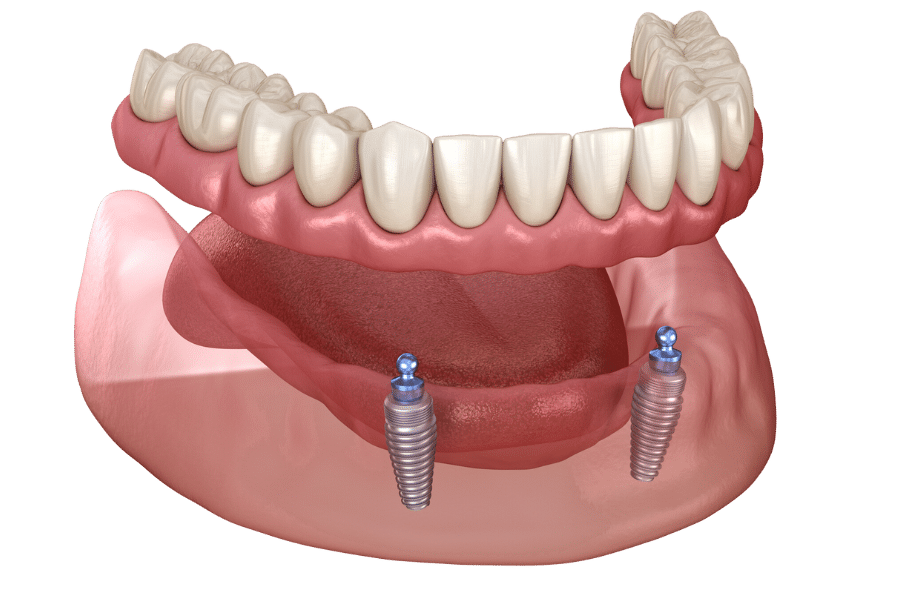
What is an Implant-Supported Overdenture?
An implant-supported overdenture is a dental prosthesis that combines dental implants with a removable denture. It offers increased stability and retention compared to traditional dentures. In this treatment approach, dental implants are strategically placed in the jawbone to serve as anchors for the overdenture. The number of implants required can vary depending on the individual’s specific needs and jawbone condition.
Once the implants are securely integrated with the jawbone, a customized denture is fabricated. The denture is designed with special attachments or clips that snap onto the implants, ensuring a secure fit and preventing slippage or discomfort. The improved stability provides for better chewing, speech, and oral function.
Also, the overdenture can be easily removed for cleaning and maintenance, providing convenience for the wearer.
Understand More About Dental Implants
Am I a good candidate for dental implants?
Our oral surgeons will perform dental examinations and analyze your dental history prior to your dental implant surgery. An evaluation for dental implants is comprised of a clinical exam and a 3D cone beam CT scan that will provide a clear picture regarding your specific condition. If you are not an ideal candidate for dental implants, techniques such as bone grafting may be recommended to prepare your jawbone to be strong enough to receive dental implants. Patients who have certain existing medical or dental conditions may not be able to receive a dental implant.
You may be a good candidate for dental implant surgery if you:
- Have one or more missing teeth
- Cannot wear dentures
- Are looking for a natural-looking tooth replacement
- Have adequate bone to secure dental implants
Are missing teeth bad for oral health?
Tooth loss can severely impede oral health. Teeth and gums become more sensitive and difficult to clean, increasing the chances of cavities and gum disease. Missing teeth that go untreated may cause the remaining teeth to shift, misalign, and make further treatment increasingly difficult. Fortunately, Staten Island Oral & Maxillofacial Surgery offers dental implants in NY as well as a variety of advanced bone grafting methods to make permanent and immediate restorations possible.
What procedures are involved in getting dental implants?
Dental implant surgery typically requires two surgical procedures and a team effort between one of our oral surgeons and a restorative dentist. During the first surgery, your oral surgeon will place the implant fixture into your jawbone. This procedure is performed in office under local anesthesia with IV sedation. Over the next 3 to 6 months, the dental implants beneath the surface of the gums gradually bond with the jawbone through the process of osseointegration.
Once the dental implant has bonded permanently to the jawbone, your oral surgeons will then uncover the implant and attach a small post, also known as a healing abutment, that protrudes from the gums. At this point, you can visit your restorative dentist who will create and fit the permanent dental crown for you. The entire process generally takes anywhere from 6 to 8 months.
Is there an alternative to the two-step dental implants?
In some instances when there is sufficient stable bone surrounding the extraction site, you may be a candidate for an immediately placed dental implant during your initial dental extraction surgery. It may also be possible to place a temporary dental crown the same day as your dental implant procedure. These dental implants do not require a second procedure to uncover them but do require a minimum of 6 months of healing time before permanent artificial teeth can be placed.
How long do dental implants last?
If they are well taken care of, your implants will last for many years. Proper care includes taking the time to practice good oral hygiene (brushing and flossing) and keeping regular appointments with your dentist. With proper dental hygiene, dental implants are long-lasting and will provide natural-looking results. Because dental implants are scientifically designed to act like your naturally-occurring teeth, it is important to maintain good oral hygiene to ensure the stability and health of your dental implants.
What type of dental restorations are available for implants?
A dental crown is used to replace each missing tooth or teeth and is securely attached to the dental implant. A fixed bridge is capable of replacing two or more teeth. Fixed bridges may only require 2 or 3 dental implants and not necessarily one implant per missing tooth. On the other hand, a complete fixed hybrid prosthesis is capable of replacing all missing teeth in your lower or upper jaw. For all the missing teeth in one jaw these permanent teeth can usually be placed within 24 hours with our Teeth -in-a-Day procedure.
Overdentures are specialized removable teeth or dentures which attach to a socket bar or ball supported by implants. By attaching to implants, overdentures offer more stability and retention than conventional dentures.
What type of dental implant technology is available?
Our in-office 3D Cone Beam CT Imaging provides highly accurate 3D cone beam imaging that is used to effectively determine proper dental implant placement. The 3D cone beam imaging is used to determine depth, bone density, and anatomical landmarks. Your 3D scan, along with your digital impressions, are all used to virtually plan your case in conjunction with your oral surgeon and restorative dentist in order to ensure a precise and accurate surgery.
Why should I consider Staten Island Oral & Maxillofacial Surgery for dental implants?
For anyone with missing or failing teeth, dental implants are a popular and effective permanent solution to replace teeth. Dental implants are designed to provide a strong foundation to replace missing teeth with dental crowns that look, feel, and function just like natural teeth.
At Staten Island Oral & Maxillofacial Surgery, our board-certified oral surgeons and team of dental implant specialists are uniquely experienced in all aspects of dental implant surgery. Our oral surgeons place thousands of implants every year utilizing the latest technologies and the most advanced surgical techniques. When making the important decision of where to receive dental implants, trust your care to the dental implant experts at Staten Island Oral & Maxillofacial Surgery.
How Can I Find Out More About Dental Implant Surgery in Staten Island?
For more information on dental implant surgery, please contact Staten Island Oral & Maxillofacial Surgery to schedule an appointment with oral and maxillofacial surgeons David Hoffman, D.D.S., F.A.C.S., Lydia J. Lam, D.D.S., Emad Abdou, D.D.S., and Mark Goodenough, D.D.S., M.D. by calling +1 (718-226-1251).


